Search for books, articles, and more

“Revolution in Our Lifetime”: The Black Panther Party and Political Organizing in Baltimore, 1968–1974
This exhibition explores the founding, programs, and everyday activities of the Black Panther Party’s Baltimore chapter, as well as the party’s ideological foundations and state repression it experienced. Curated by students and faculty from Johns Hopkins and Morgan State University, the installation includes facsimiles of archival material from Sheridan Libraries Special Collections.
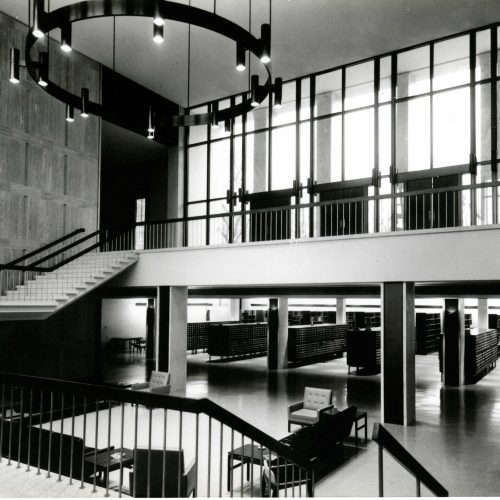
Oh, Mementos of MSE: Celebrating 60 Years at Eisenhower Library, 1964-2024
In celebration of Milton S. Eisenhower Library’s 60th anniversary, Special Collections student staff members have mined the University Archives to uncover the origin story of the building and its place as the heart of student life for six decades of Blue Jays. This look back anchors the Sheridan Libraries’ exciting plans for a renovated and reimagined MSE—a modern library that will fuel discovery, innovation, and academic excellence for the next 60 years and beyond.
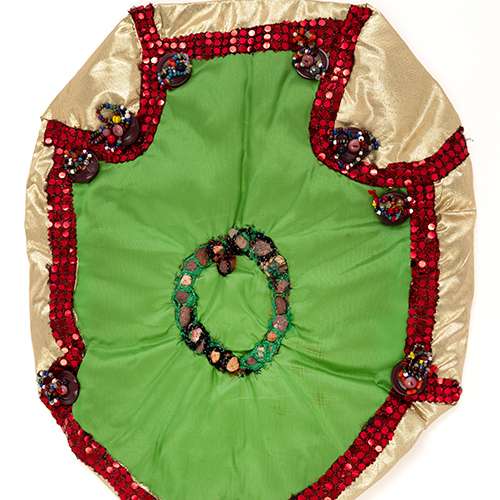
Reverberations: Disruption and Healing Through the Hands of Elizabeth Talford Scott
Reverberations: Disruption and Healing Through the Hands of Elizabeth Talford Scott invites visitors to experience two works by Elizabeth Talford Scott (1916–2011). A Baltimore quilt artist, Talford Scott used quilts and other textiles to tell stories and to preserve memories. Curated by students in MICA’s Exhibition Development Seminar, the intimate installation explores Talford Scott’s prayer quilts as both instruments for physical healing and as metaphors for societal connection and repair. It is part of the larger No Stone Left Unturned: The Elizabeth Talford Scott Initiative.
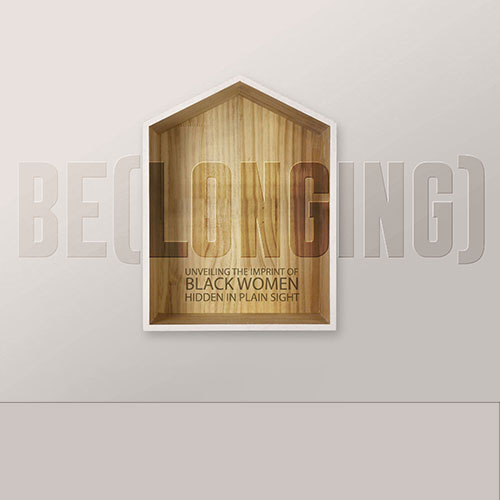
Nicoletta Daríta de la Brown: Be(longing)
The Tabb Center presents Be(longing): Unveiling the Imprint of Black Women Hidden in Plain Sight, an installation by Public Humanities Fellow Nicoletta Daríta de la Brown inspired by archival materials related to Ethel Ennis, Billie Holiday, African American real photo postcards, and other special collections at the Sheridan Libraries. Through video, photographic self-portraits, and site-specific performance, de la Brown addresses culturally significant and deeply introspective questions: How many Black women are living in archives? What happens to us when we are invisible? How can I feel seen, and safe, as a Black woman?
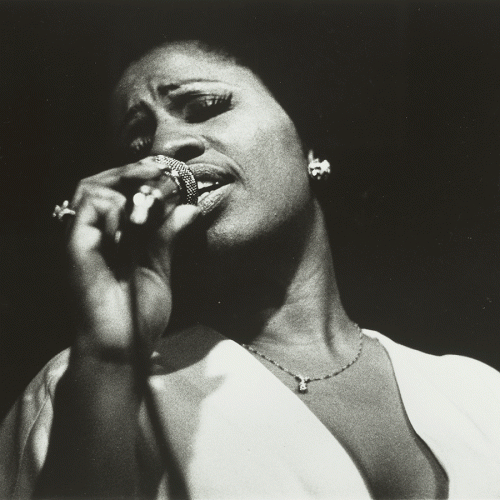
Ethel’s Place: Celebrating Ethel Ennis, Baltimore’s First Lady of Jazz
This landmark retrospective devoted to Baltimore jazz vocalist Ethel Ennis explores each era of the singer’s remarkable life—including Ethel’s Place, the storied music club she owned with husband Earl Arnett. Featuring some 130 photographs, posters, unpublished written arrangements, audiovisual recordings, business records, and other archival materials from the Sheridan Libraries, the exhibition traces how Ennis connected with local and international audiences through her artistry and personal philosophies, and consciously pioneered a musician’s career path deeply rooted in her hometown.
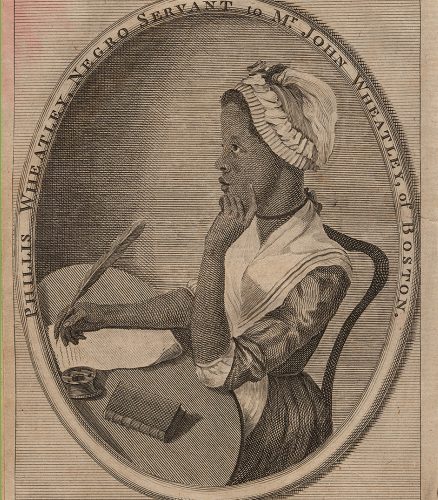
Preserved in Print: Black Cultural Icons & Legacies
The eminent figures of African descent featured in this Special Collections exhibition each were known for their dynamic presence: they stirred crowds with their speeches, charmed audiences with their performances, inspired congregations with their sermons, moved readers of their letters, and encouraged admirers of their courageous deeds. With their words and likenesses preserved in print, they became or promoted standard-bearing heroes of Black culture—recognizable icons with powerful legacies. The materials on display are enhanced by curatorial comments from graduate students in last semester’s Black Print Culture course taught by English professor Nadia Nurhussein.
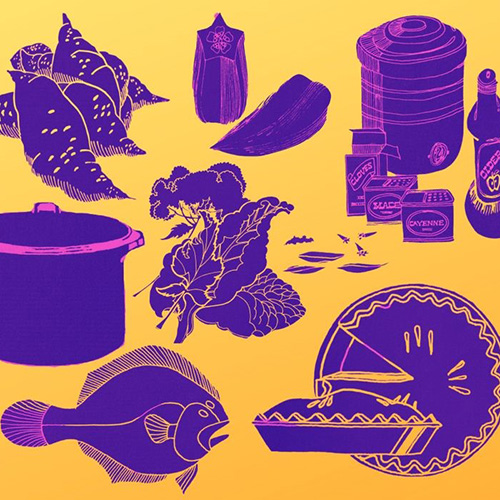
Black Foodways: A Culinary Diaspora
Featuring materials drawn largely from the private collections of W. Paul Coates, founder and director of Black Classics Press, and Toni Tipton-Martin, editor of Cook’s Country magazine and an award-winning cookbook author, this exhibition explores how cookbooks by Black authors serve not only as crucial repositories of African and African American culinary traditions, but also as sites of food innovation and cultural transformation.
Non-affiliate visitors will be asked to present photo ID and vaccination card at the Security Desk. Click here for visitor access guidelines.
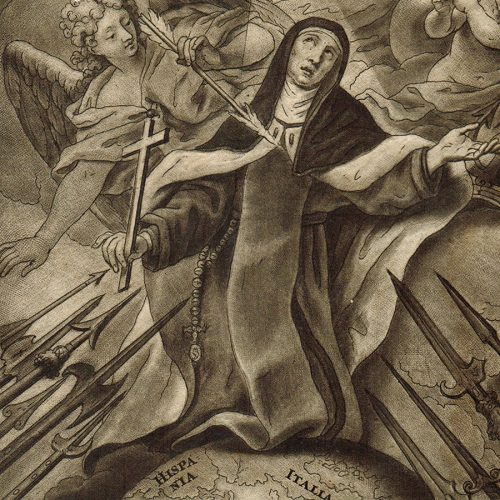
Women of the Book: The Spiritual Lives of Early Modern Women, 1450-1800
In 2017 the Johns Hopkins Sheridan Libraries acquired the world’s largest and most comprehensive collection of rare books, manuscripts, and ephemera detailing the experiences of early modern women from the Renaissance to the Enlightenment. This exhibition of treasures from the collection paints the world of these holy women in living color—from psycho-spiritual autobiographers, bilocating nuns, rock star status saints, ecstatic mystics, and female healers, to the hidden careers of women printers and engravers and miracle makers.
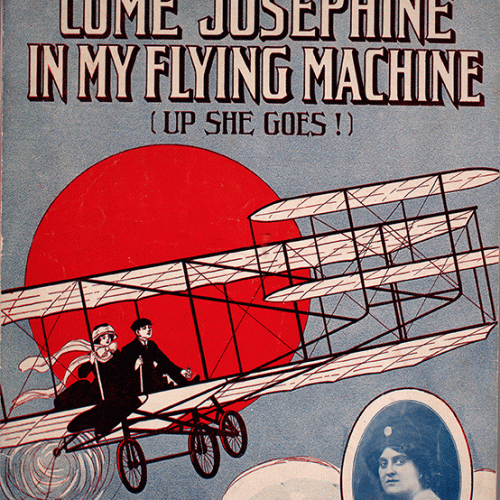
Grace Notes in American History: 200 Years of Songs from the Lester Levy Sheet Music Collection
This exhibition highlights over one hundred popular songs and instrumental compositions drawn from Johns Hopkins University’s renowned collection of 19th- and early-20th-century sheet music. Together works on view provide unique insights into the evolution of American popular culture, from the Great American Song Book and Harlem Renaissance, to Baltimore music publishers and national movements for suffrage, emancipation, and labor.
This exhibition was on display March 15 through July 31, 2022 at the George Peabody Library. Click here to learn more.
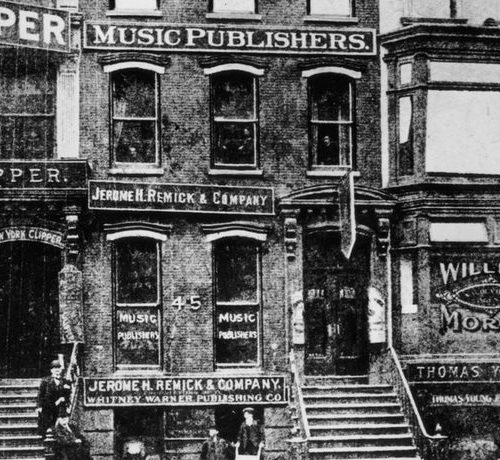
Mapping Tin Pan Alley
At the end of the 19th century, the largest cluster of music publishers and venues in Manhattan was in Union Square. Blackface minstrelsy was still a dominant form of entertainment, the foundation of home entertainment was the piano, theaters were segregated, and the city was transitioning from elevated railways to subways. Over the next 60 years, Manhattan saw both an explosion and migration of publishers and venues that cemented the industry in its current locations: Times Square and Harlem. This virtual exhibition maps the entertainment boom and its migration through Manhattan from 1880 to 1940 using songs from the Lester Levy Sheet Music Collection.
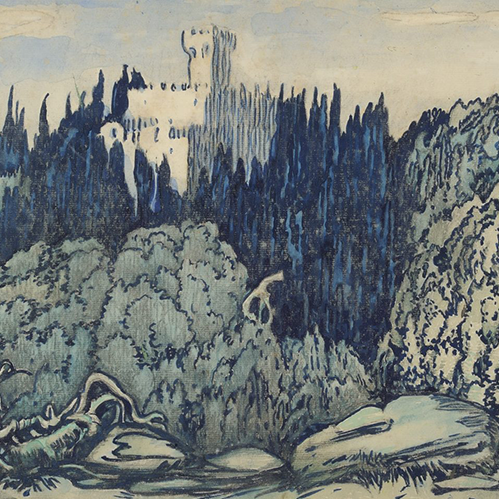
Léon Bakst at Evergreen
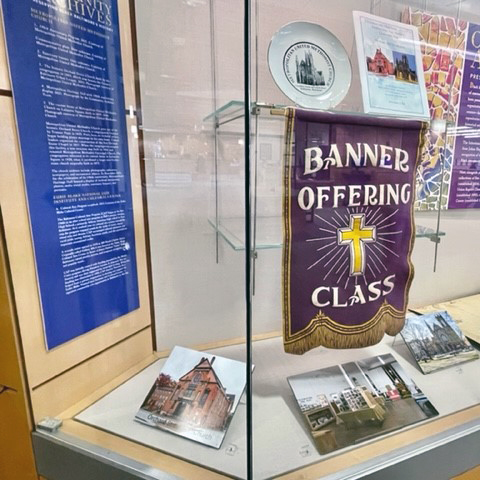
Community Archives: Preserving Black Baltimore
Materials documenting Black history and culture have often been neglected by traditional institutional repositories. Shown through the lens of Inheritance Baltimore’s Community Archives Project, the ephemera, artifacts, and photographs on display bear witness to the importance of non-traditional Black community archives. Drawn from the collections of the Eubie Blake National Jazz Institute and Cultural Arts Center, The AFRO newspaper, and several of the historic Black churches of West Baltimore, this exhibition illuminates some of the historical treasures stewarded by Black community archives—and the labor that the Community Archives team brings to this effort, one box at a time.
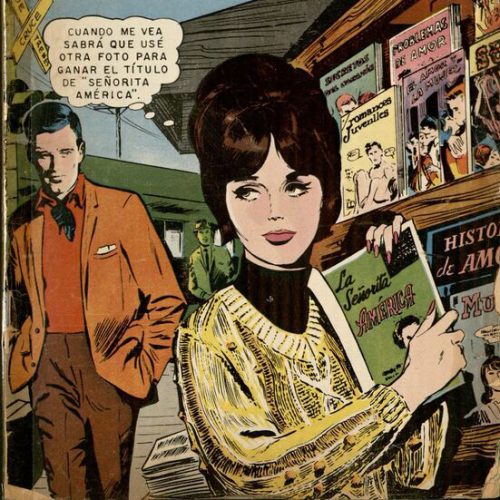
Romancing the Comic Book
While Batman and Spider-Man were mesmerizing readers with their dual identities and crime-fighting ways, an alternate comic book timeline was booming featuring the adventures of airline stewardess Bonnie Taylor, tragically unhappy actress Lisa St. Clair, and other female characters seeking love in the pages of romance comic books. Popular from the late 1940s to the mid-1970s, romance comic books introduced teenagers to the joys and heartache of love through advice columns, fashion spreads, and allegedly true stories of romance for as little as ten cents. This exhibition features thirty rare and important issues of this forgotten aspect of comic book history drawn from the Sheridan Libraries Special Collections.
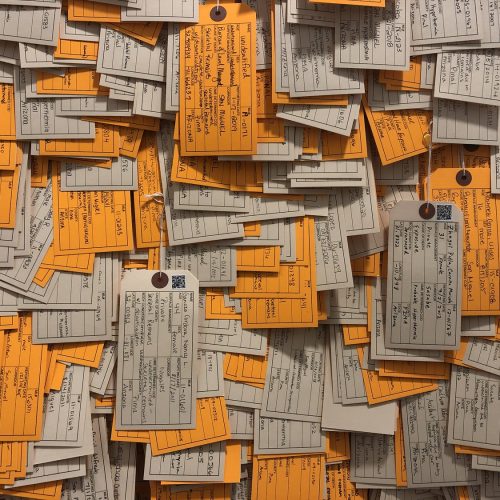
Hostile Terrain 94
HT94 offers a visual, forensic, and intimate way to think about the human cost of migration and immigration policy along the US-Mexico border. Approximately 3,200 handwritten toe tags representing migrants who died trying to cross the Sonoran Desert of Arizona between the mid-1990s and 2019 are placed on their specific geo-locations on a large wall map. The installation visualizes the underrecognized lethal effects of the 1994 U.S. immigration strategy “Prevention Through Deterrence” and provides a literal forensics of immigration policy.
HT94 is organized by the Undocumented Migration Project (UMP), a non-profit research-art-education-media collective directed by anthropologist and MacArthur grantee Jason De León. The JHU installation is part of a network of partners across five continents concurrently hosting the exhibition.
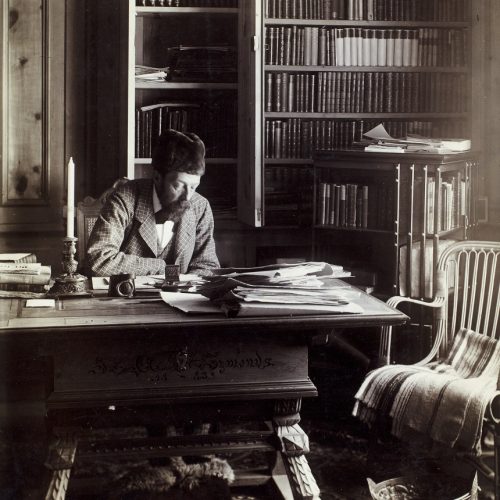
Queer Connections: The Library of John Addington Symonds
John Addington Symonds (1840-1893) was a Victorian writer, book collector, and pioneering theorist of human sexuality. Prompted by personal experience, he searched for historical evidence of same-sex love and social support for relationships considered “deviant” in his own time. He found that evidence in Ancient Greece, inspiring his 1883 essay “A Problem in Greek Ethics”—a ground-breaking analysis of homosexuality in the ancient world that became a touchstone for the emerging gay rights movement.
Through his reading, writing, and collecting practices, Symonds also created a network of like-minded thinkers, artists, and writers. This exhibition—curated by faculty and student participants in the John Addington Symonds Project (JASP), the pilot iteration of the Classics Research Lab (CRL)—displays extracts from Symonds’s library, a glimpse of the “queer connections” that sustained him and enabled his work.
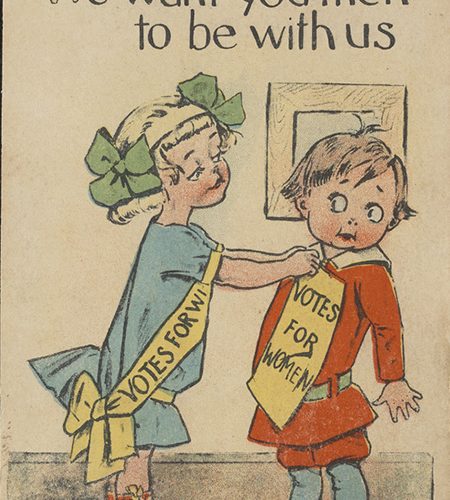
Votes & Petticoats: Suffrage Postcards
The debate over women’s suffrage was among the most popular subjects illustrated on postcards during the start of the twentieth century. Issued commercially and by suffragettes and anti-suffrage activists, postcards could be witty, sentimental, or serious, and many used powerful symbols and arguments to make their case. This focus display features nearly fifty postcards drawn from the Sheridan Libraries’ Special Collections that represent the visual culture surrounding the Votes for Women campaign. The culmination of an undergraduate learning course, the installation is presented as part of Johns Hopkins University’s Women’s Suffrage Centennial Commemoration.
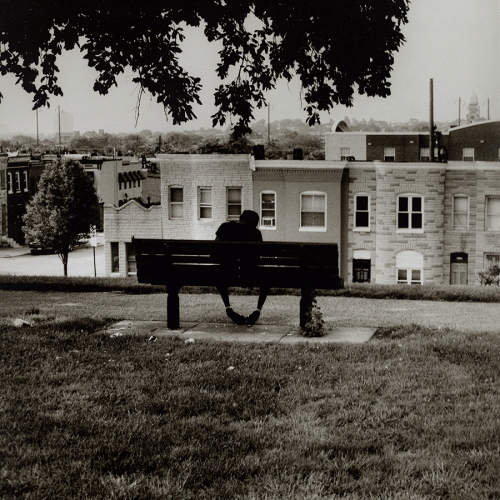
City People: Black Baltimore in the Photographs of John Clark Mayden
This exhibition presents over fifty of John Clark Mayden’s black-and-white street portraits taken since the 1970s, many on view for the first time. These photographs capture the ordinary joys and sorrows, quiet moments, and daily realities of Baltimore’s African American neighborhoods: kids on their bikes and roller skates, old timers catching a breeze on their front stoops, busy people striding through the snow, tired people taking a break. Through careful observation and local understanding, Mayden lays bare the beauty and heartbreak of everyday life, Black life, in an American city.
The exhibition celebrates a recent gift from the artist to the Sheridan Libraries. It is accompanied by a new publication from the Johns Hopkins University Press, featuring an essay by art historian Michael D. Harris.
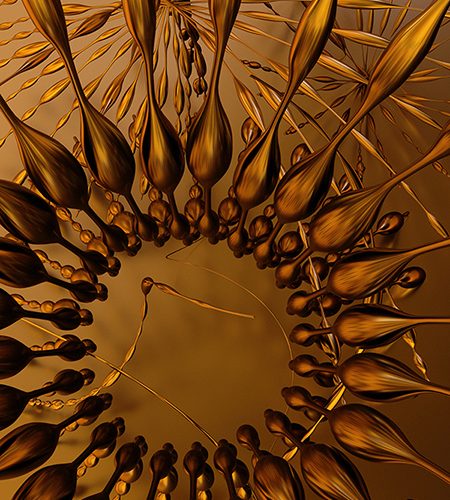
Explorations of Invisible Domain: Work by Christopher Sloan
Opening Reception: Friday, March 6, 4:30 – 7:30pm
This exhibition features new work by the 2019 HEMI/MICA Artist-in-Residence, Christopher Sloan. Using Hopkins Extreme Materials Institute research projects as a starting point, Sloan aesthetically probed the nature of atoms and molecules in specific situations at extremely small scales. The result is a series of dreamlike and surreal landscapes that provide a vicarious—and somewhat fantastical—voyage into a world far beyond the range of unaided human vision.
An award-winning expert in bringing the principles of science to life for popular audiences, Sloan teaches data analytics and visualization at MICA, and modern approaches to science art online for the Academy of Art University in San Francisco.
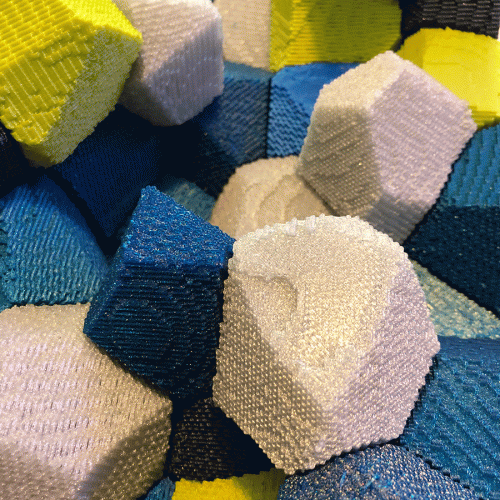
Symmetry & Fracture: Works by Jenna Frye
The Sheridan Libraries are pleased to host a solo exhibition of work by maker/teacher Jenna Frye from her 2018 artist residency at the Hopkins Extreme Materials Institute (HEMI). Frye is assistant department chair of First Year Experience and coordinator of the Electronic Media and Culture program at the Maryland Institute College of Art (MICA). In “Symmetry & Fracture,” she offers a way to connect physically with the complex research ideas of HEMI labs through hands-on exploration of mineral crystal systems and the grain boundaries of metallic materials. You are invited to playfully investigate and decide for yourself where or if the boundaries lie between.
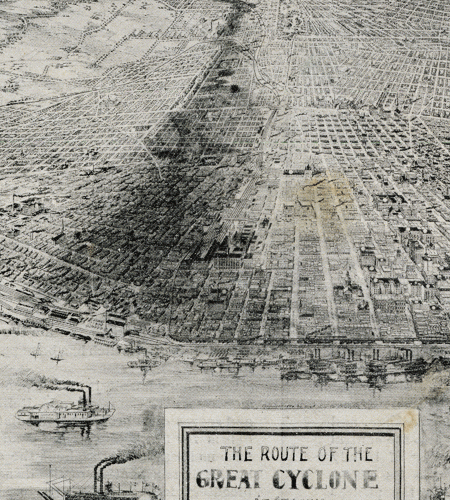
Landmarks in the History of Natural Catastrophe Modeling
Natural hazards such as floods, fires, earthquakes, and hurricanes threaten human life and property every year across the world, and the risk of future losses is increasing due to population growth, climate change, and urbanization. The Sheridan Libraries are pleased to host this exhibit featuring important objects and documents that represent historic milestones in the development of catastrophe modeling in the United States, from the late 1800s to today. The exhibit also highlights Johns Hopkins researchers who made important contributions to risk modeling and management.
Organized by Gonzalo L. Pita, PhD, Adjunct Associate Scientist and Lecturer, Department of Civil Engineering, Johns Hopkins University. The objects on view are drawn primarily from private collections, along with related items from the Sheridan Libraries’ holdings.
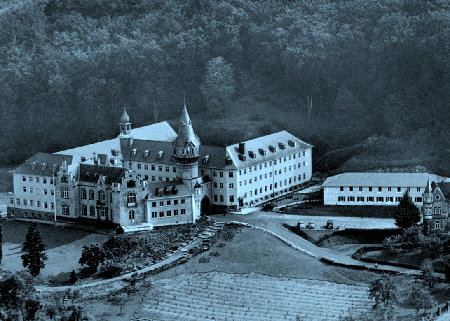
The Rosenburg—The Federal Ministry of Justice in the Shadow of the Nazi Past
In 2016, an independent commission of historians released their study of the post-World War II establishment of the West German justice ministry. Named ‘The Rosenburg Files’ after the ministry’s first official residence, the report revealed that the judiciary was a stronghold of former Nazi Party members until the 1970s. Organized by the German Federal Ministry of Justice and Consumer Protection, this interactive exhibition explores the Nazi infiltration of the justice ministry and the legal and political consequences for the young Federal Republic.
This is the second stop in the U.S. tour of the exhibition, which debuted at George Washington University in February 2019.
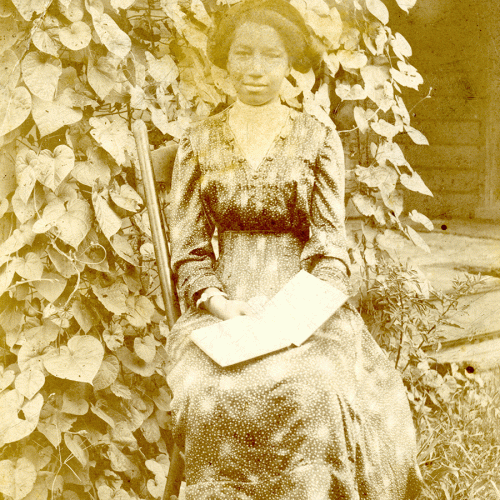
Movements: Black Print Culture in the United States, 1773–1940
African Americans wrote, published, and read through eras of enslavement and segregation, at times defying legal restrictions, economic obstacles, and violence. In pamphlets, books, magazines, newspapers, and printed ephemera, they narrated their own lived experiences, expressed themselves in imaginative genres, and advocated for better social conditions. Featuring materials from the Sheridan Libraries’ Special Collections, this exhibition examines the movement of black print culture: both its circulation, which forged bonds among American blacks, and its contribution to political and social movements of racial solidarity.
The exhibition is curated by Johns Hopkins English professor Nadia Nurhussein, and graduate students Samanda Robinson and Jarvis Young.
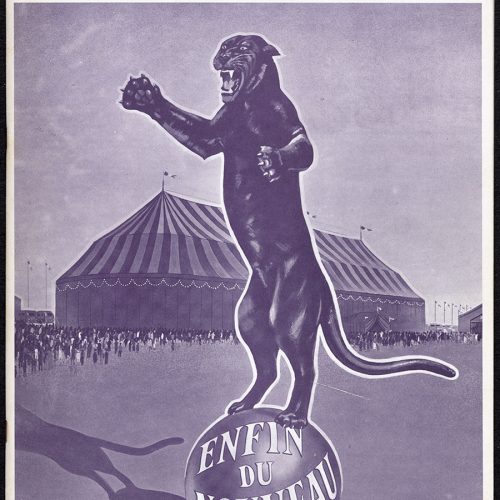
Robho in Context
The journal Robho appeared in Paris during the turbulent years 1967–71, a period crowned by the explosive events of May 1968. Its stance was anti-consumerist, opposing capitalist expansion in France. Its purview extended beyond Europe, reflecting the increasing globalization of avant-garde thought and display, and united artists actively debating both their roles within society and the nature of art itself. Inspired by Robho’s emphasis on new media, kinetic tendencies, and ephemeral performances, this exhibition features avant-garde materials by a diverse group of far-flung producers primarily in the 1960s and ’70s, drawn from the Sheridan Libraries’ Special Collections
The exhibition is curated by undergraduate students enrolled in Professor Molly Warnock’s History of Art course, The “Long Sixties” in Europe.
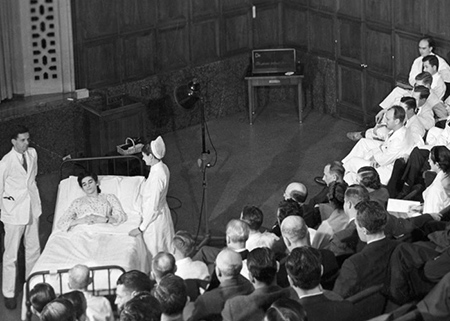
The Johns Hopkins University School of Medicine: 125 Years of Tradition and Innovation
From the day the Johns Hopkins University School of Medicine opened its doors in 1893, it has pursued a mission to create a worldwide legacy of education, research, and patient care. To celebrate this remarkable 125-year history, this multimedia exhibition traces how faculty, students, staff, donors, and patients shaped Johns Hopkins, and how Hopkins in turn shaped modern biomedicine. Historical photographs of the institution’s most renowned researchers are paired with tidbits of history to provide snapshots of singular moments, from the feminist philanthropists of 1893 to the innovative investigations and advances of the present. Also on view are digital facsimiles of treasured artifacts from the Alan Mason Chesney Medical Archives of the Johns Hopkins Medical Institutions.
The exhibition was organized by the Chesney Medical Archives and the 125th Anniversary Planning Committee of the School of Medicine. This is the exhibition’s second presentation, following its East Baltimore campus installation, June 1–October 22, 2018.
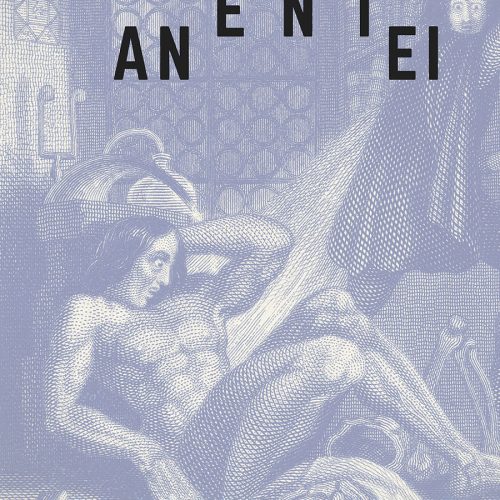
Frankenstein: 200 Years in Print
Where does our fascination with Frankenstein come from? And why has it lasted so long? This focus exhibition presents early and illustrated editions of Mary Wollstonecraft Shelley’s famous novel, along with theater and film tie-ins and twentieth-century homages to the monster’s tale—just a few examples of its remarkably full life in print. Frankenstein’s history of prolific publication and adaptation demonstrates its ongoing popularity, and helps explain why it is now permanently bound up with our ideas about what it means to be human.
The exhibition is presented in conjunction with Johns Hopkins University’s Frankenstein! Media + Monsters: Two Centuries of Frankenstein
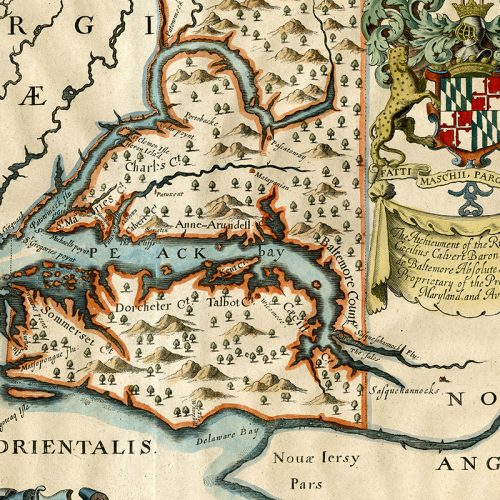
Maryland, from the Willard Hackerman Map Collection
From colonial impressions of the Chesapeake Bay to detailed city plans for guiding Baltimore’s rapid expansion, this exhibition features over thirty of the most stunning and historically significant maps of Maryland from the collection of the late businessman, philanthropist, and Johns Hopkins alumnus Willard Hackerman. The maps are brought together with related rare books and prints, ephemera, and digital story maps to reveal the passion of a collector, the early mapping of Maryland, and the potential of combining historical maps with modern data to re-examine the past. Highlights include John Ogilby’s “Lord Baltimore Map” from 1671, a hand-colored edition of Thomas H. Poppleton’s 1822 “Plan of the City of Baltimore,” and engraved views of Baltimore from the Harry N. Baetjer Collection of Historical Maps and Prints.
The exhibition celebrates the gift of the Willard Hackerman Map Collection from Lillian P. and Willard Hackerman to the Sheridan Libraries in 2016.
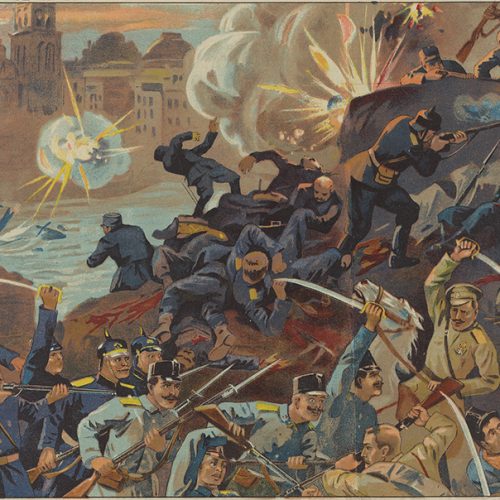
“This book is not about heroes”: Poetry and World War I
Commemorating the centenary of the Armistice that ended the First World War, this exhibition puts poems from the battlefield and the home front into conversation with historical photographs, maps, artifacts, and the correspondence of John Alexander, a Baltimorean and officer in the American Expeditionary Forces. World War I was conducted in flooded trenches, against chemical weapons, bombshells, machine guns, airplanes, and tanks. While many participants began the conflict in the high spirit of nationalism, conceptions of heroism, patriotism, and military ethics were re-examined and reformed under the war’s punishing conditions. The poetry of the war testifies to the dramatic cultural shifts it prompted.
The exhibition is curated for the Sheridan Libraries by Lucy Eills (Writing Seminars, Class of 2018), recipient of a Sheridan Libraries / Alexander Grass Humanities Institute Dean’s Undergraduate Research Award.
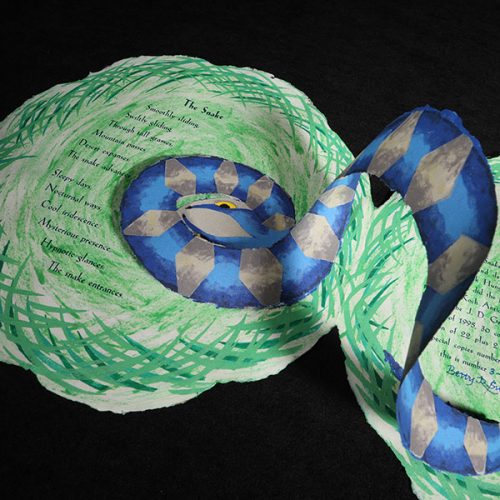
Beyond the Text: Artists’ Books in the Sheridan Libraries
Just what are artists’ books? There’s no one answer. They can be unique or produced as multiples; they can look like books or something else entirely; and they may or may not contain text. Though there is no one definition of an artist’s book, the contemporary genre emerged in Europe and the Unites States in the 1960’s, leading to galleries, workshops, and academic programs that center on book arts.
Like all works of art, artists’ books can challenge, provoke, or be enjoyed purely for their beauty. Eight works by artists Barbara Beisinghoff, Maureen Cummins, Gloria Helfgott, Paul Johnson, Betty Sweren, and the collective Ediciones Vigia—all drawn from the Special Collections department of the Sheridan Libraries—showcase the diverse ways book artists interpret the possibilities of the book as object.
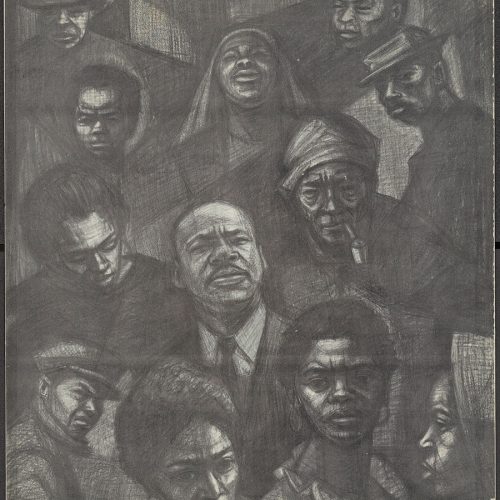
The Spirit of ’68
1968 was marked by war and protest, tragedy and revolution—a year around which a whole era of political turmoil, cultural change, and social unrest turned. This exhibition examines some of the many explosive events of 1968 and the period around this pivotal year. The photographs, posters, pamphlets, books, film footage, and archival documents on display focus on the assassination of Dr. Martin Luther King Jr. and the “Holy Week Uprisings” that followed in Baltimore; student activism on the Johns Hopkins campus; Vietnam War propaganda and protest; the “Mai 1968” unrest in France; the Black Power and Black Arts movements; and the emergence of what would become known as Gay Liberation.
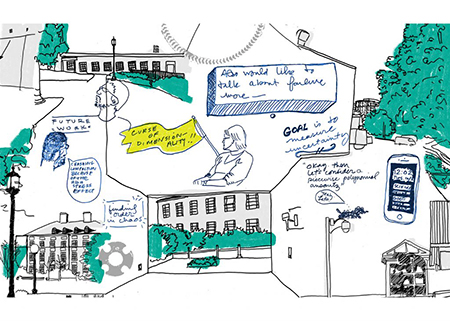
Kimberly Hall: The Curse of Dimensionality
The Sheridan Libraries are pleased to host an exhibition of the work of Kimberly Hall (MICA Faculty, Illustration Practice M.F.A.) from her time as the 2017 Artist-in-Residence with the Hopkins Extreme Materials Institute (HEMI). Many artists rely on the occurrence of chance and mistake to help propel their work into new areas, and while that open-minded approach is sometimes elusive, it is often exciting. For this residency, Kimberly Hall of Nottene design studio explored the work of Dr. Lori Graham-Brady and her students, who also work with chance in their research of randomness in the behavior of non-homogenous materials, such as concrete and ceramics. Through Hall’s conversations with this group, she was impressed with the ways the scientists described their process and felt it was deeply connected to the struggle of the human condition and making sense of the world. Hall has created a scratch-off wallpaper and transparent fabrics that aim to illustrate the practice of research and highlight the connection between discovery and meaning.
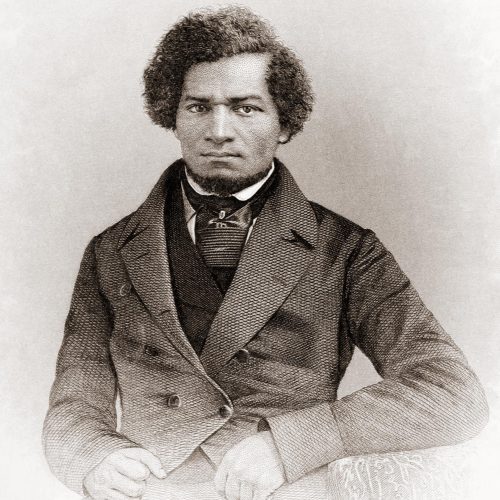
Happy Birthday Frederick Douglass!
Frederick Douglass was born into slavery in Talbot County, Maryland, around 1818; the exact date of his birth was unknown to him, but he chose to mark it on February 14. He spent time in Baltimore as a boy and teen-ager and it was from Baltimore that he made his escape to the North. He became a key figure in the abolitionist struggle, writing his memoirs, publishing newspapers, and making speeches in support of freedom for Black Americans-as well as other civil rights causes.
This exhibit features first editions of some of his many publications, drawn from Sheridan Libraries’ collections, in celebration of his 200th birthday.
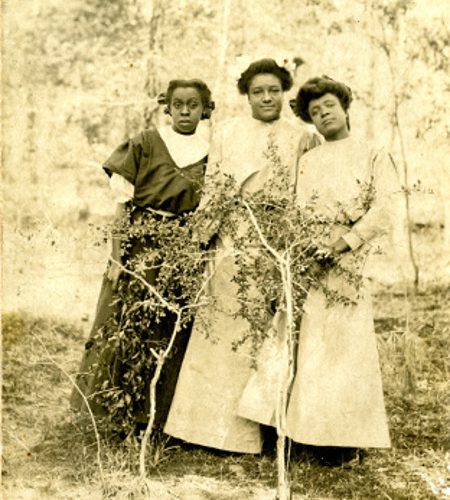
American Selfie
How did Black Americans take “selfies” in the early twentieth century? This exhibit, curated by juniors Monika Borkovic and Lorna Henson, draws from their work in a recent Museums & Society class to explore intriguing examples of postcard portraits from the Sheridan Libraries’ African American Real Photo Postcard Collection. Visitors can also take their own “historic selfies.” Extended through May 11, 2018.
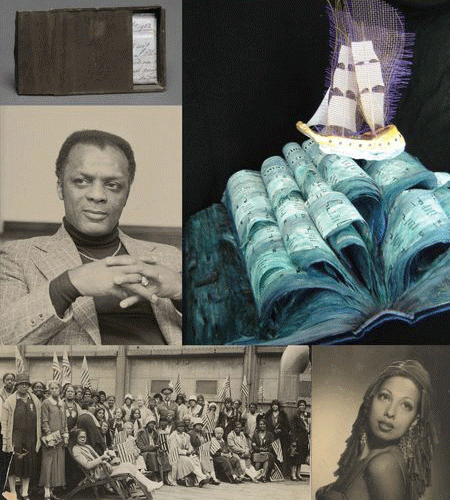
Freedom Papers: Black Assertions from the Archives
This exhibition weaves together five distinct freedom stories to illustrate the many ways that Black people have transcended the limitations that oppression would otherwise impose, revealing to themselves and others an autonomy of their own making. The items on display include less-known African American materials held by the Department of Special Collections and Archives at the Sheridan Libraries, including an 1886 account of the Amistad trial; a 1937 souvenir program from Josephine Baker; a photograph taken in 1930 of Black Gold Star mothers; and the personal letters and photographs of African American soldiers who served in World War II. These once-hidden items are paired with one-of-a-kind book art pieces created by Baltimore artist Martha Edgerton.
Organized by the Johns Hopkins Black Faculty and Staff Association and the Center for Africana Studies.
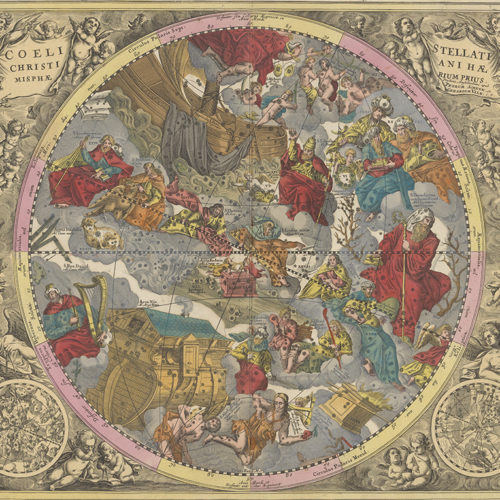
Bibliomania: 150 Years of Collecting Rare Books at the George Peabody Library
Over the past 150 years the George Peabody Library has captured, through its rare book and manuscript collections, America’s deepest desires and vaulting ambitions to bring the history of the world and ideas to the City of Baltimore. This exhibition presents many of the richest and rarest fruits of George Peabody’s early intellectual and bibliophilic aspirations, from the collection the library opened with in 1866 to the massive cast-iron expansion in 1878, which transformed the library into the glorious “Cathedral of Books” that it continues as today.
The exhibition is accompanied by a fully illustrated scholarly catalogue featuring essays by Earle Havens, Christopher Geekie, and Neil Weijer. It is available for purchase through the Homewood Museum gift shop by calling 410-516-5589.
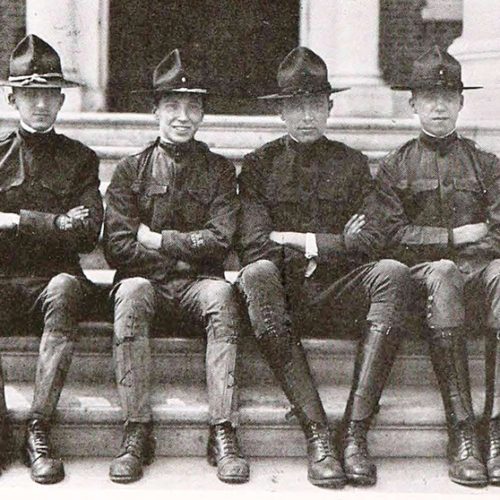
Hopkins and the Great War
This multi-campus exhibition explored the impact of World War I on the Johns Hopkins community, including members of the Homewood campus, the hospital and School of Medicine, and the School of Nursing. By looking at the lives of students, faculty, and patrons, we can understand the complex and far-reaching ways the Hopkins community both contributed to and was affected by this devastating global conflict.
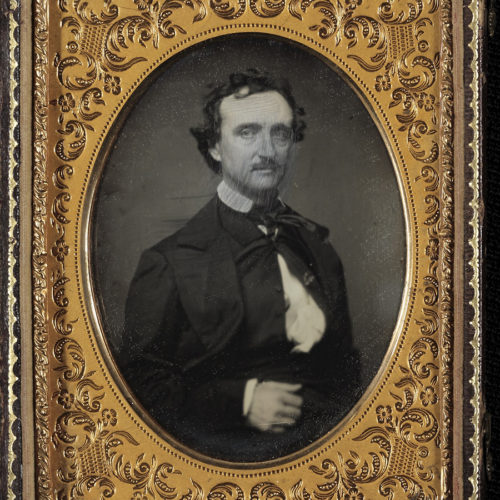
The Enigmatic Edgar A. Poe in Baltimore & Beyond: Selections from the Susan Jaffe Tane Collection
This exhibition of books and objects associated with Edgar Allan Poe, highlighting his innovations and breadth as a writer, included the exceptionally rare publication Tamerlane and Other Poems (1827) and a lock of Poe’s hair. Edgar Allan Poe in 20 Objects, an illustrated book of essays about Poe’s life and work featuring items from the Susan Jaffe Tane Collection, is available for purchase at the Peabody Library and through Amazon.
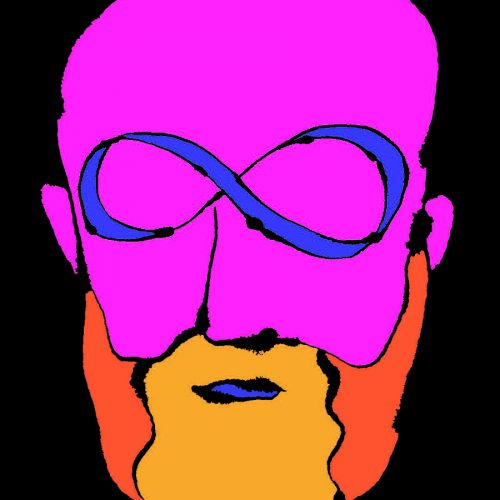
Lost & Found in the Funhouse: The John Barth Collection
This exhibition celebrated the American writer John Barth, known for his masterful literary experiments. Barth’s novels and stories are full of surprises, partly because of his inventive story-telling techniques; the exhibition evoked that playful spirit in its design. You can get a glimpse of Barth’s “workshop” in the online exhibition.
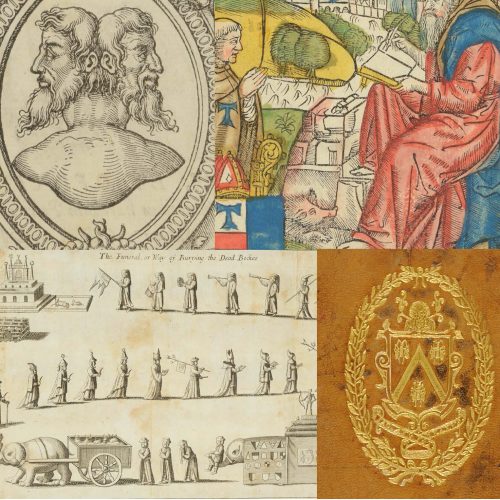
Fakes, Lies, and Forgeries: Rare Books And Manuscripts From The Bibliotheca Fictiva Collection
This exhibition features highlights from the Arthur and Janet Freeman Bibliotheca Fictiva Collection, the world’s most comprehensive collection of rare books and manuscripts on the history of forgery in the West. With more than 1,700 items, the collection touches on some of the greatest theological disputes in Western history, including preposterous claims of universal papal authority, audacious medieval land grabs and efforts to rewrite the history of the world back to Noah and the Flood.